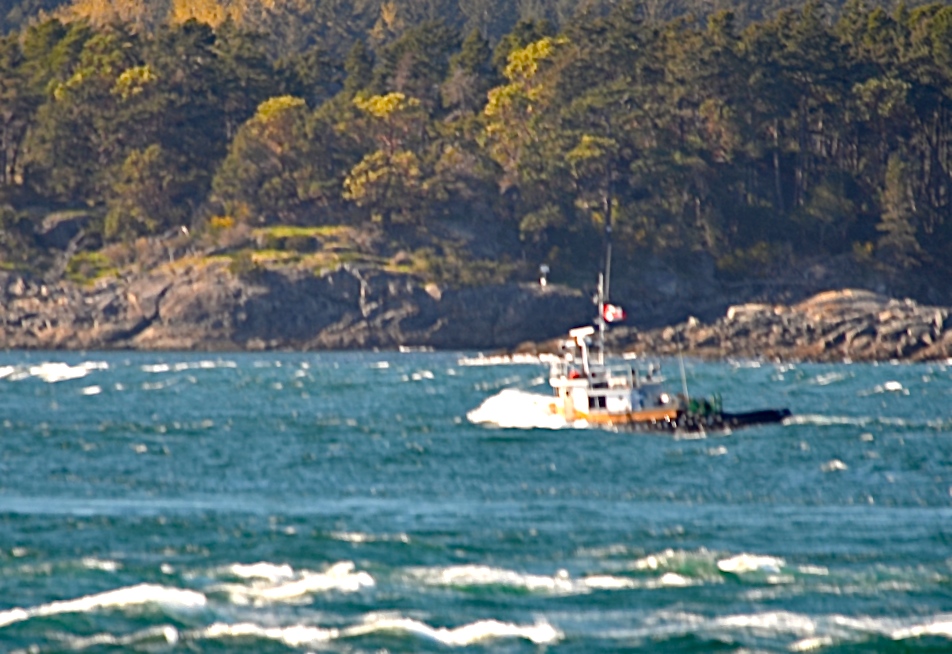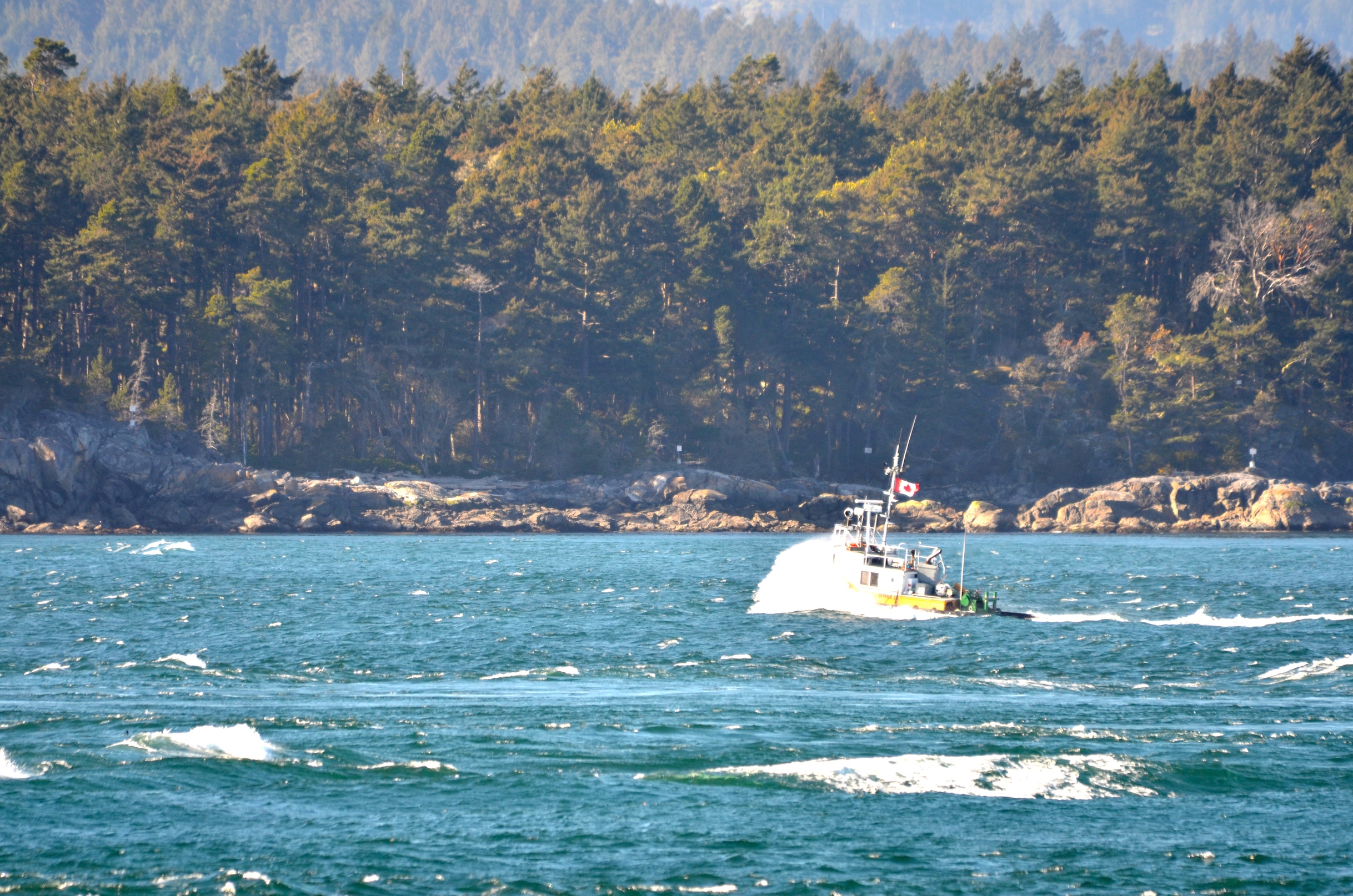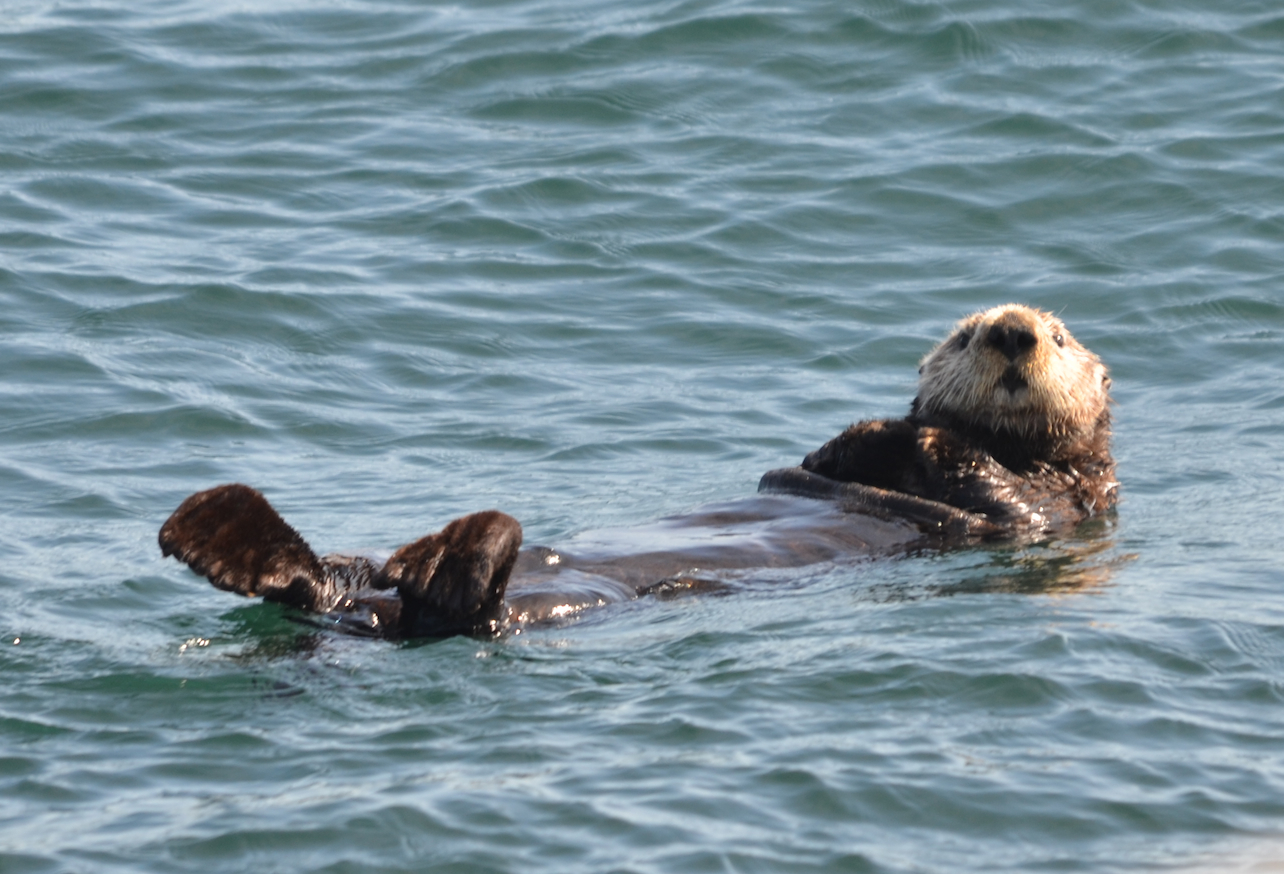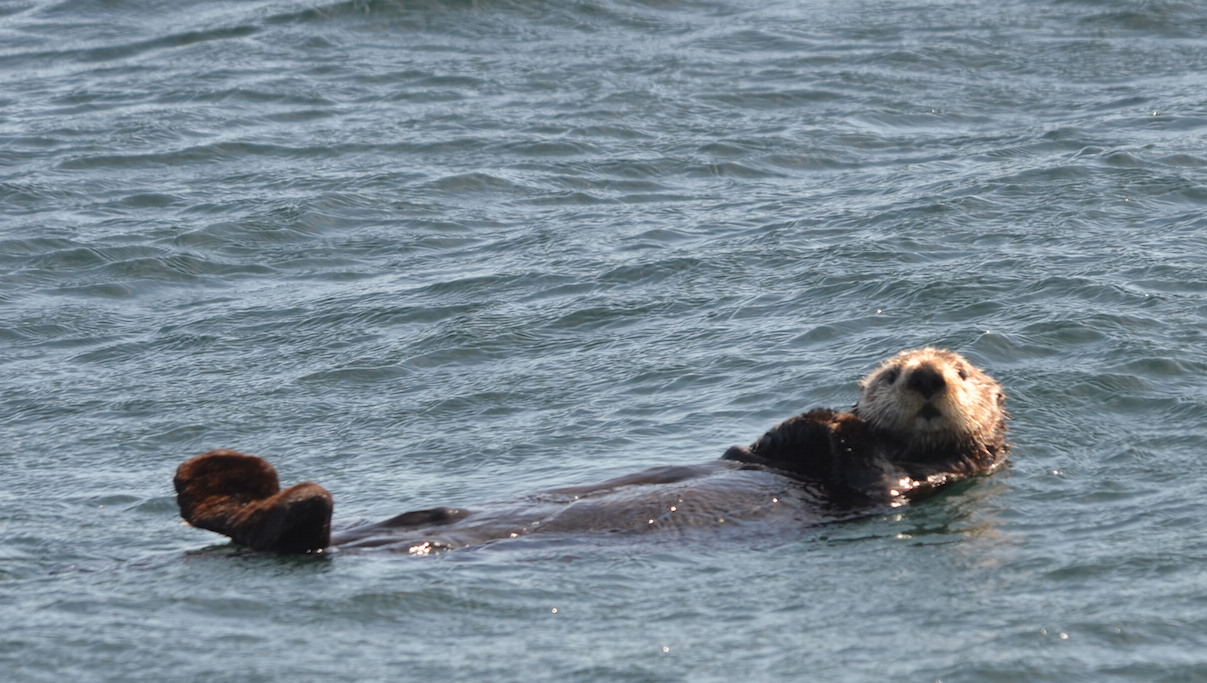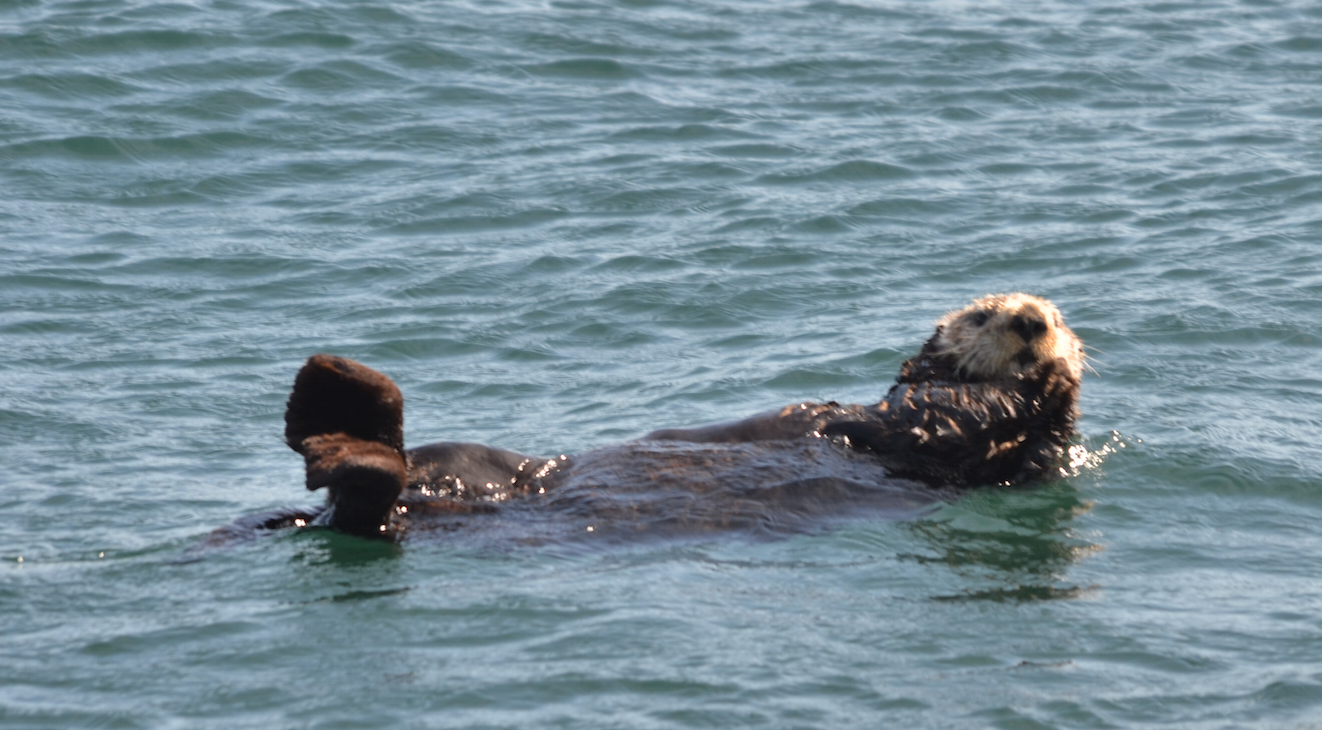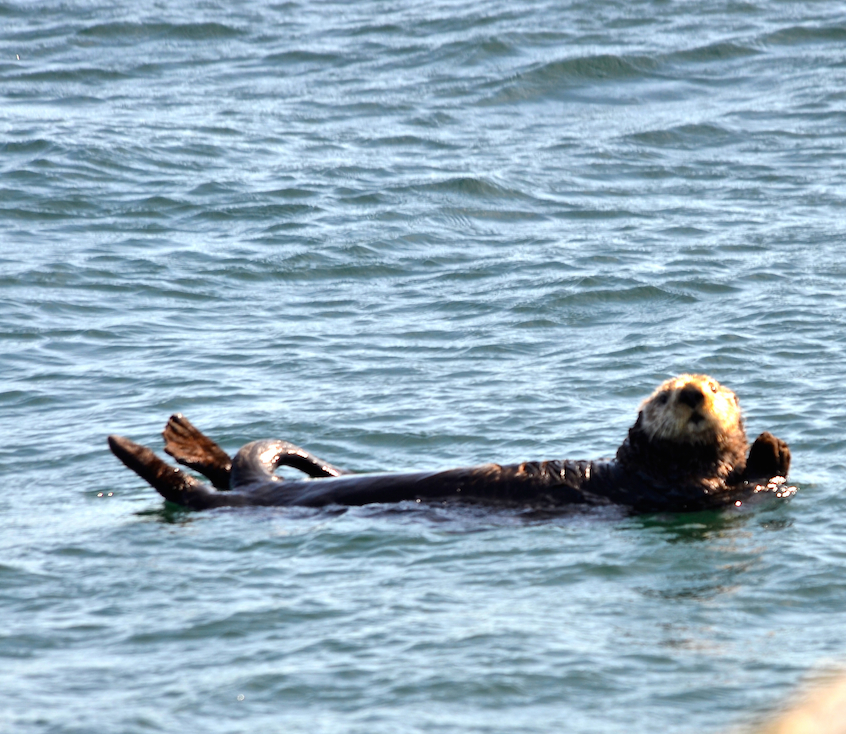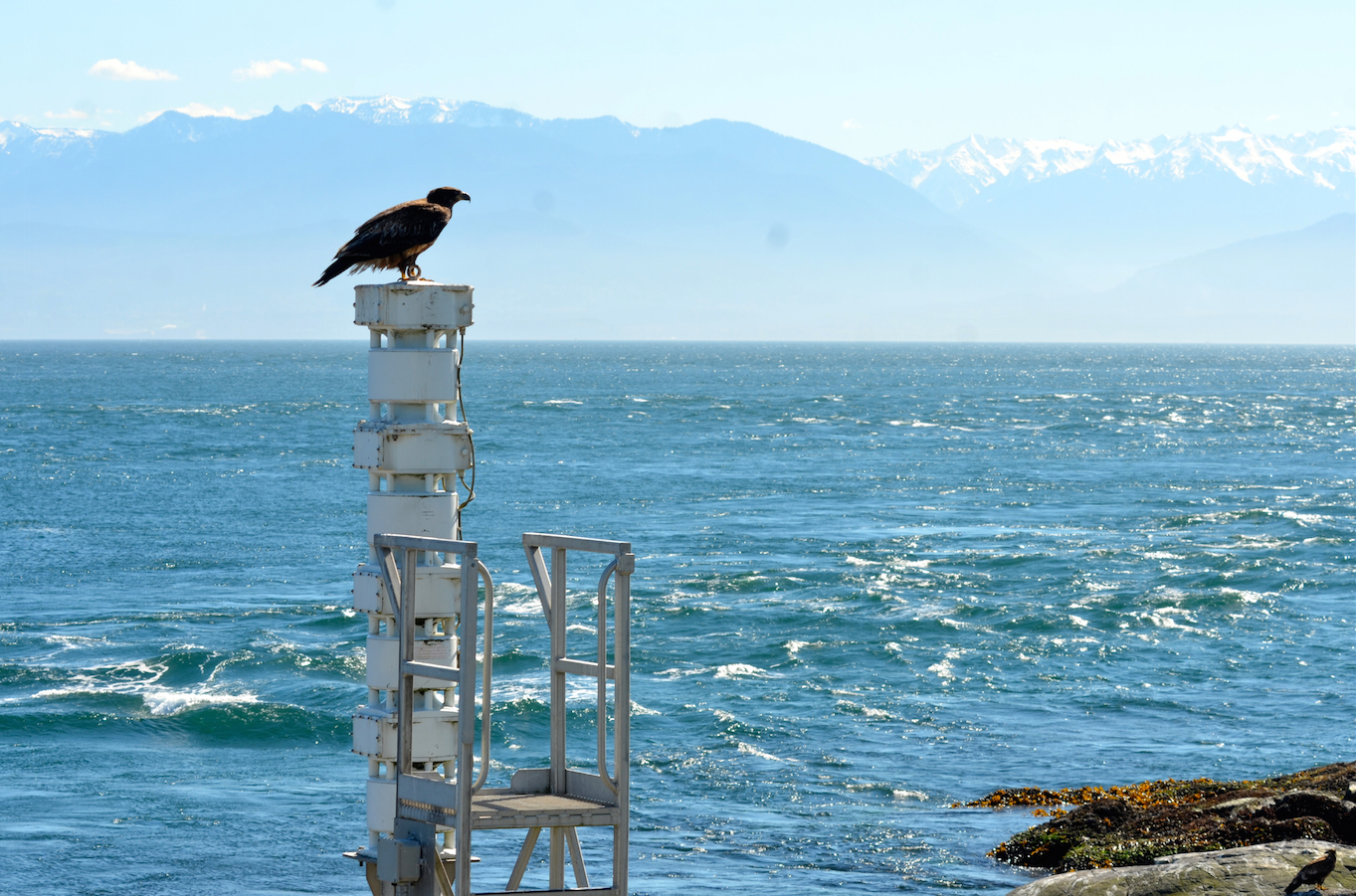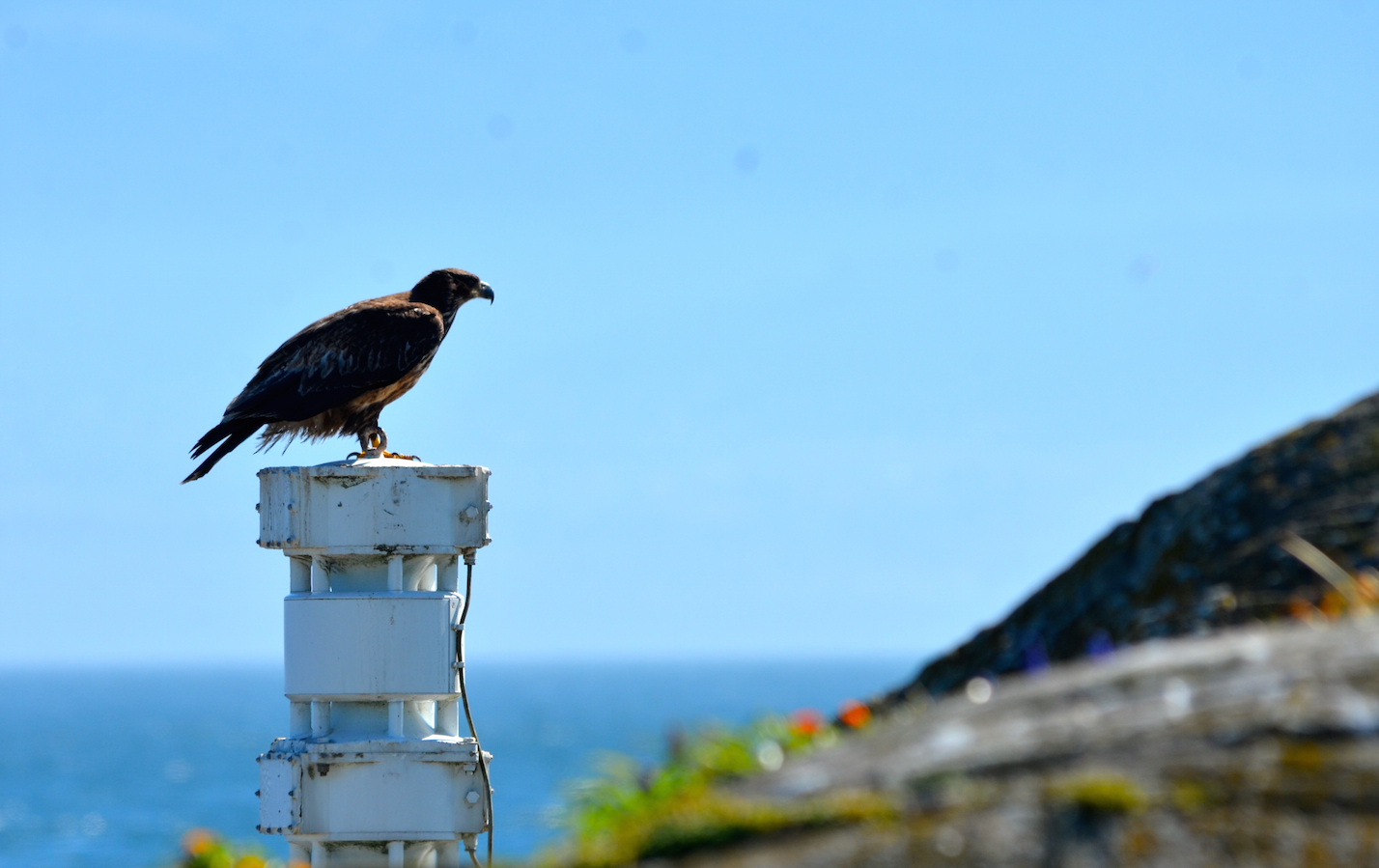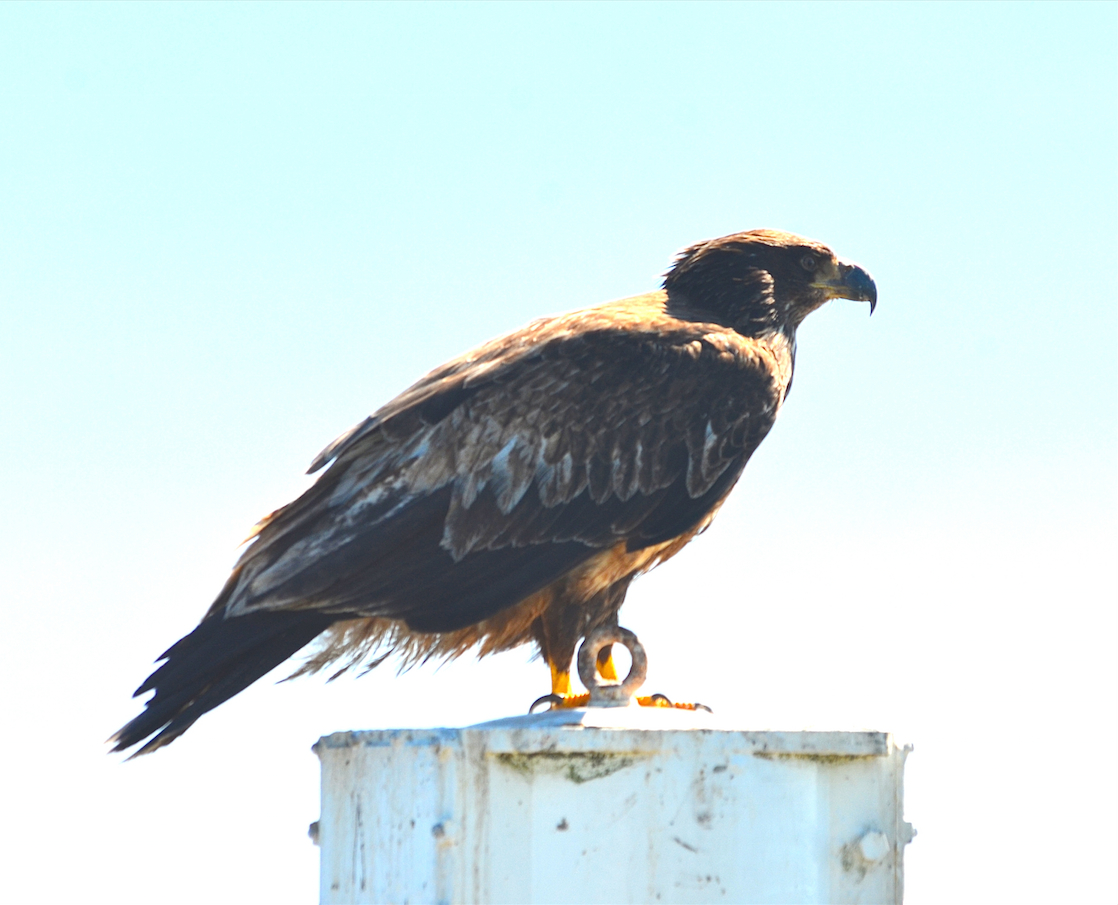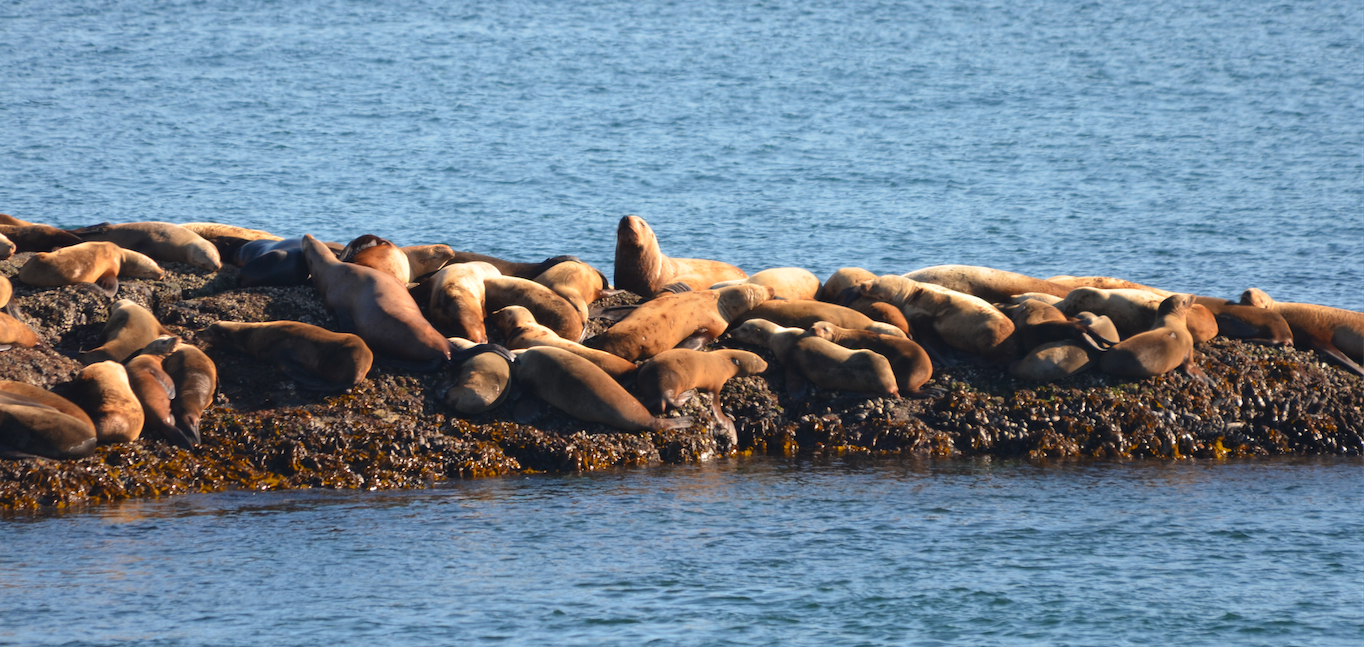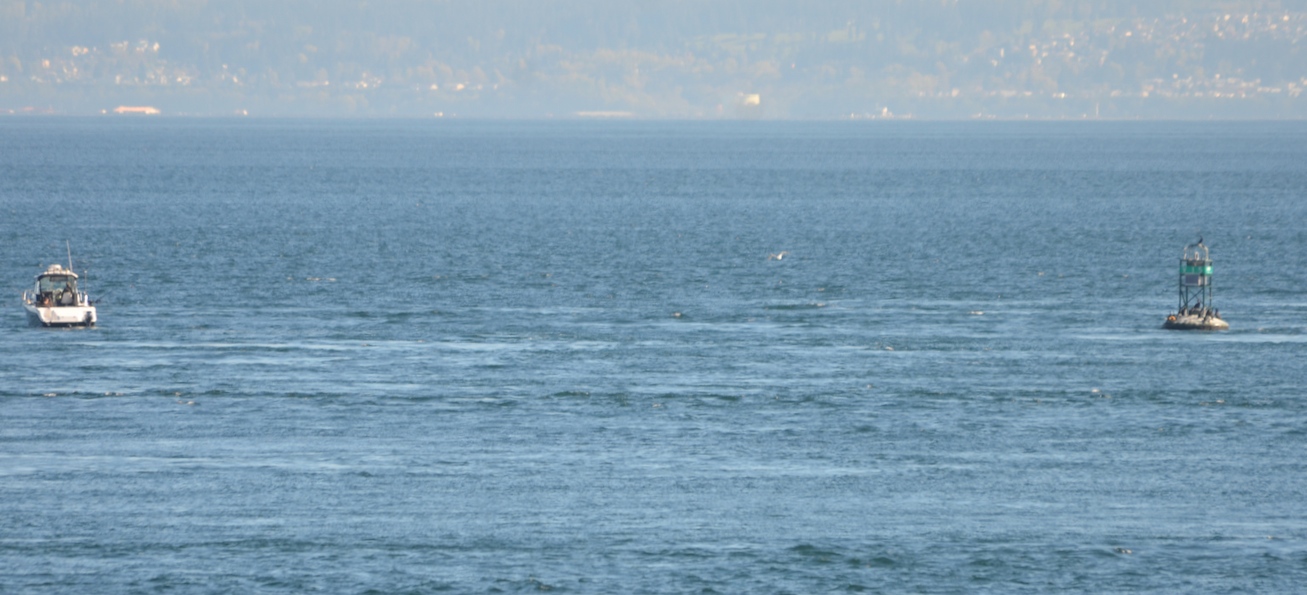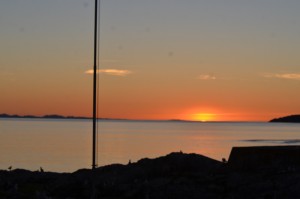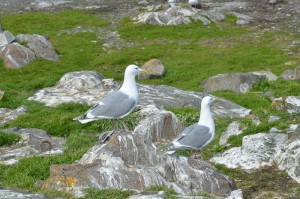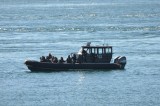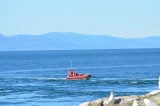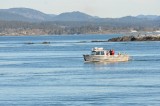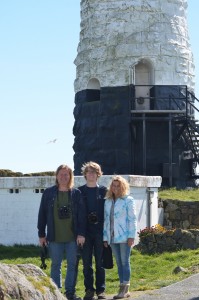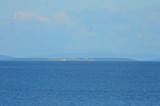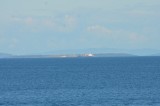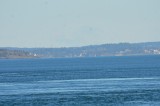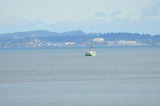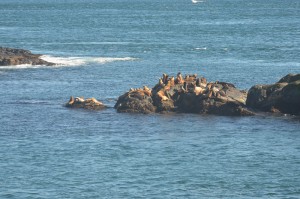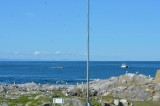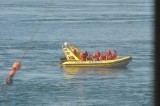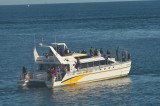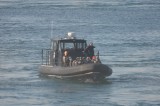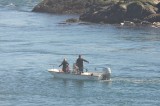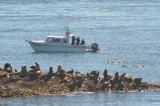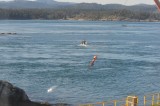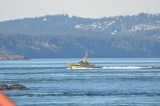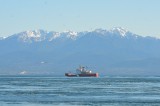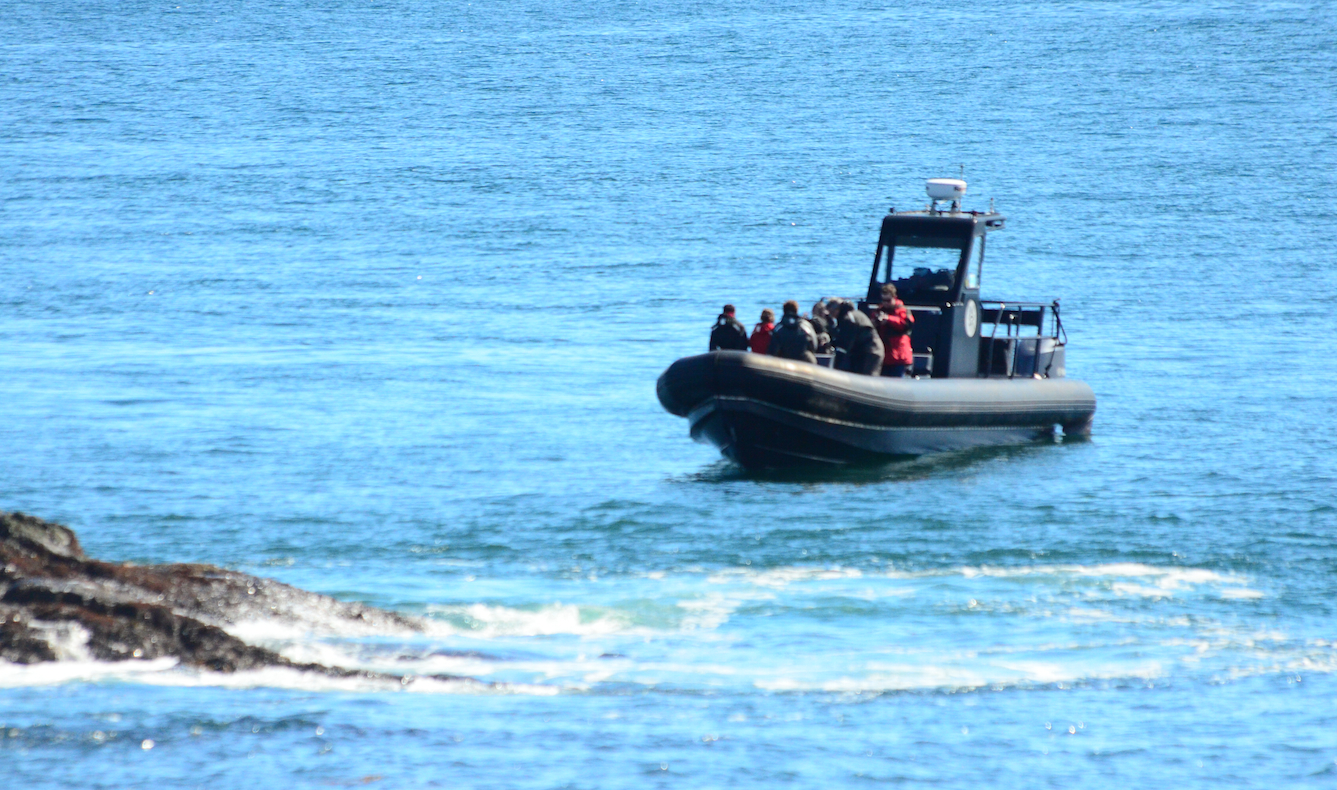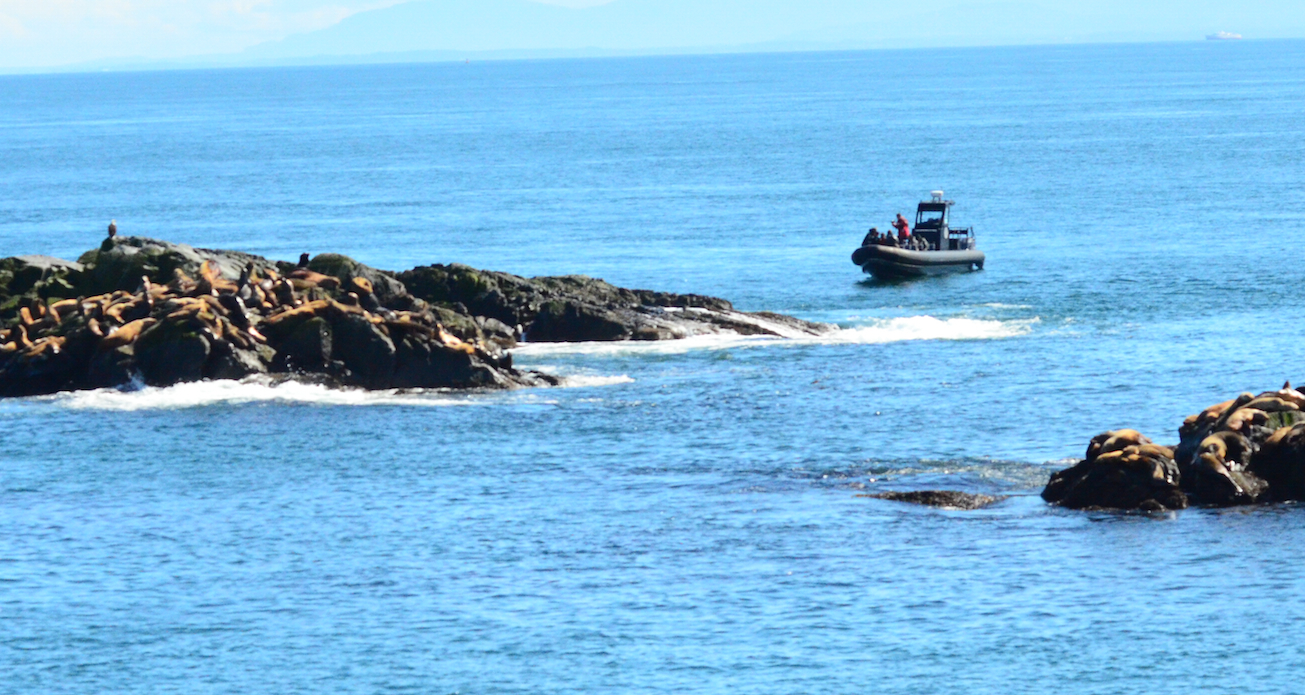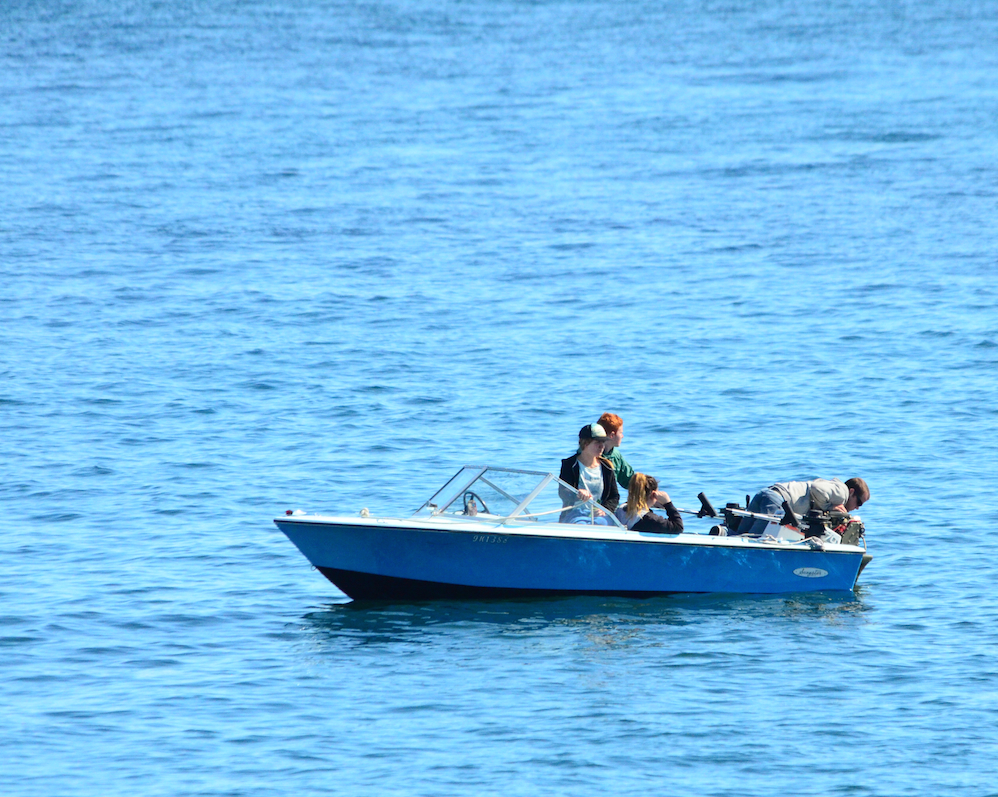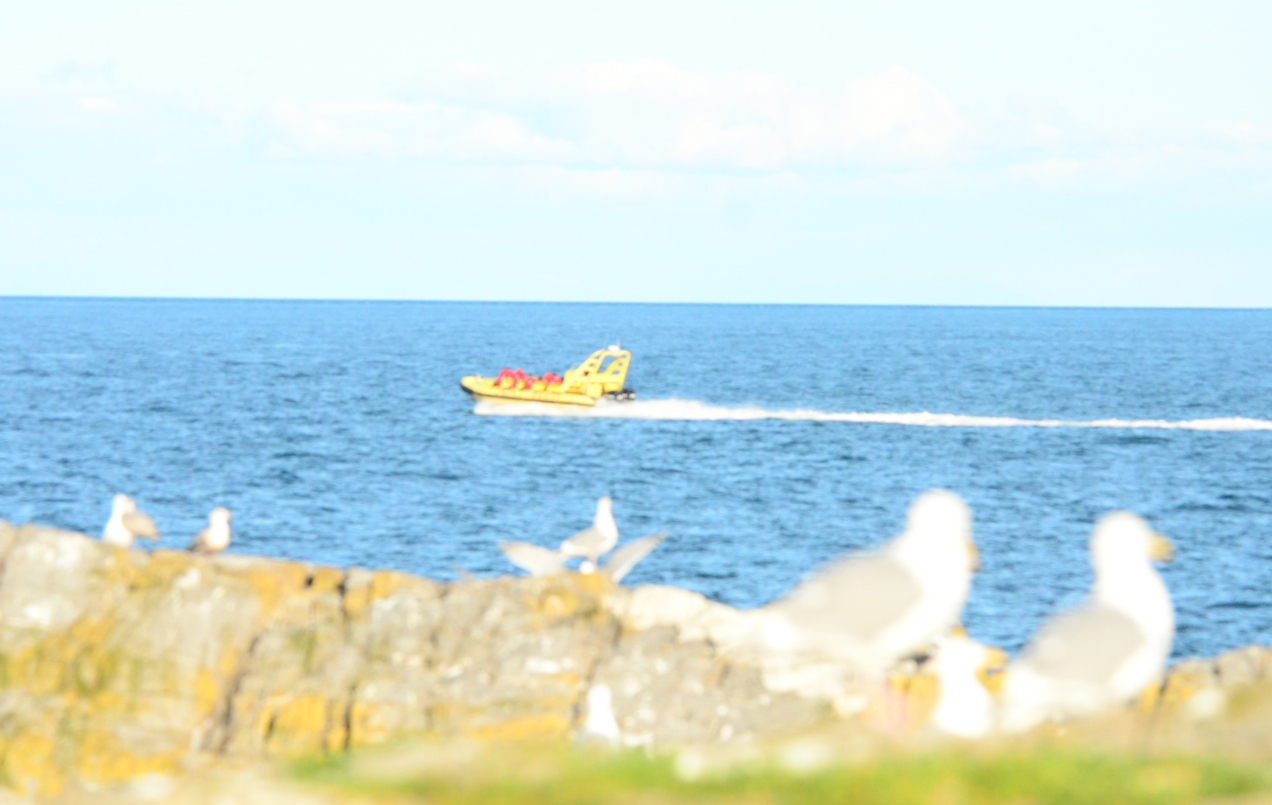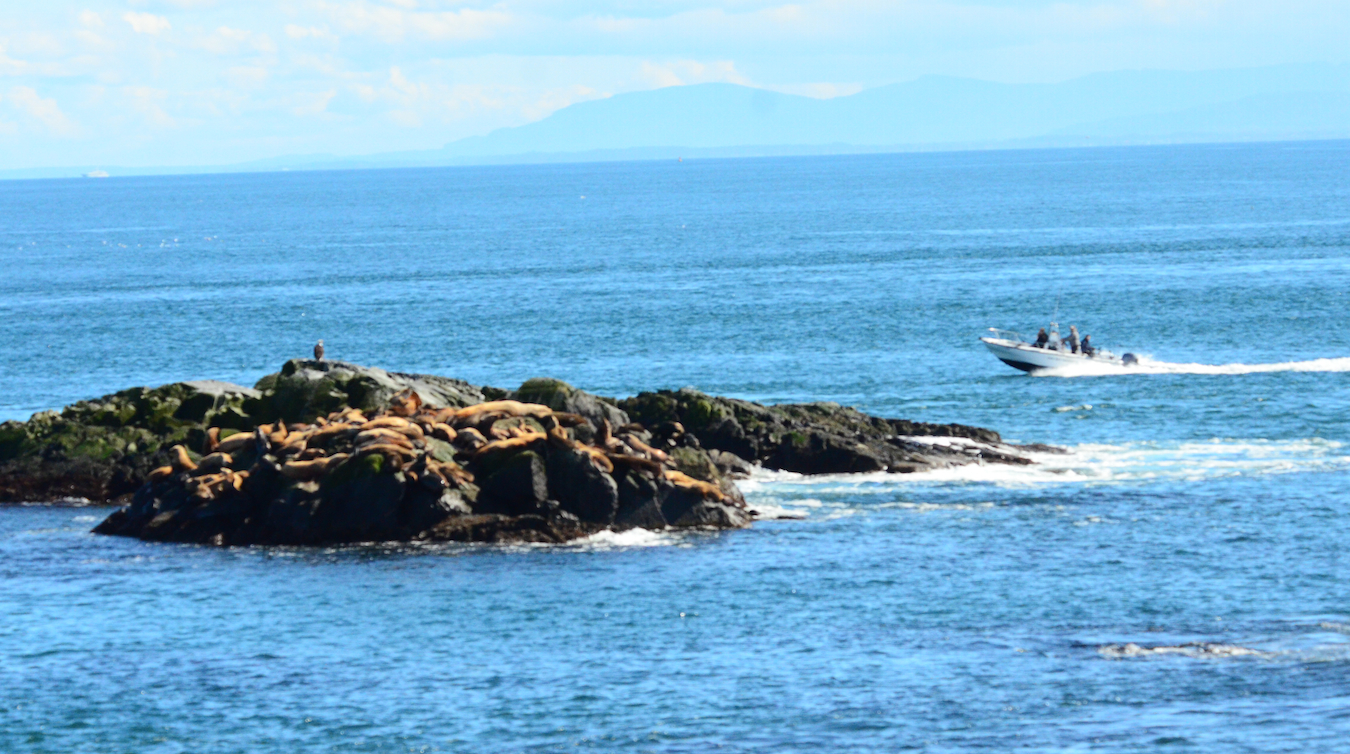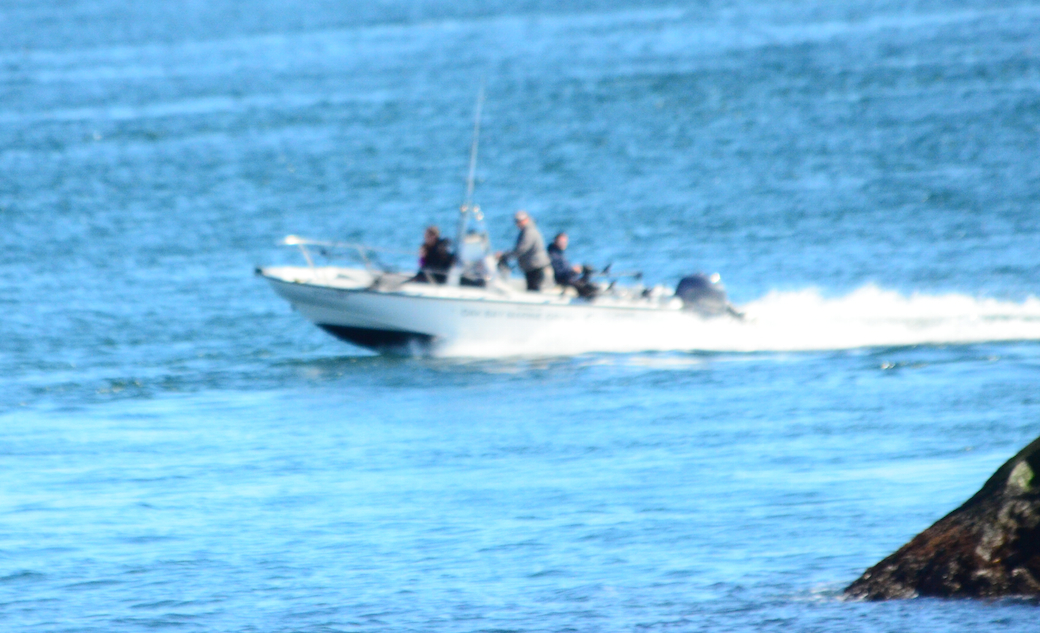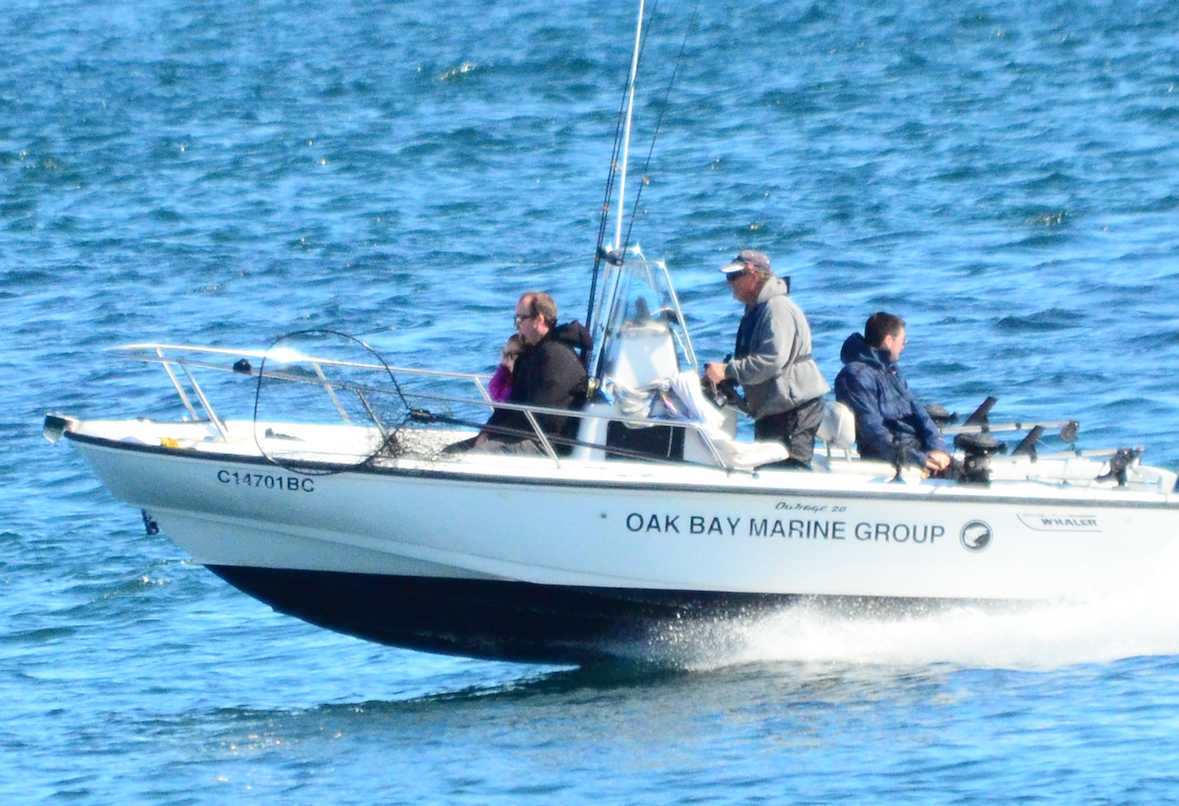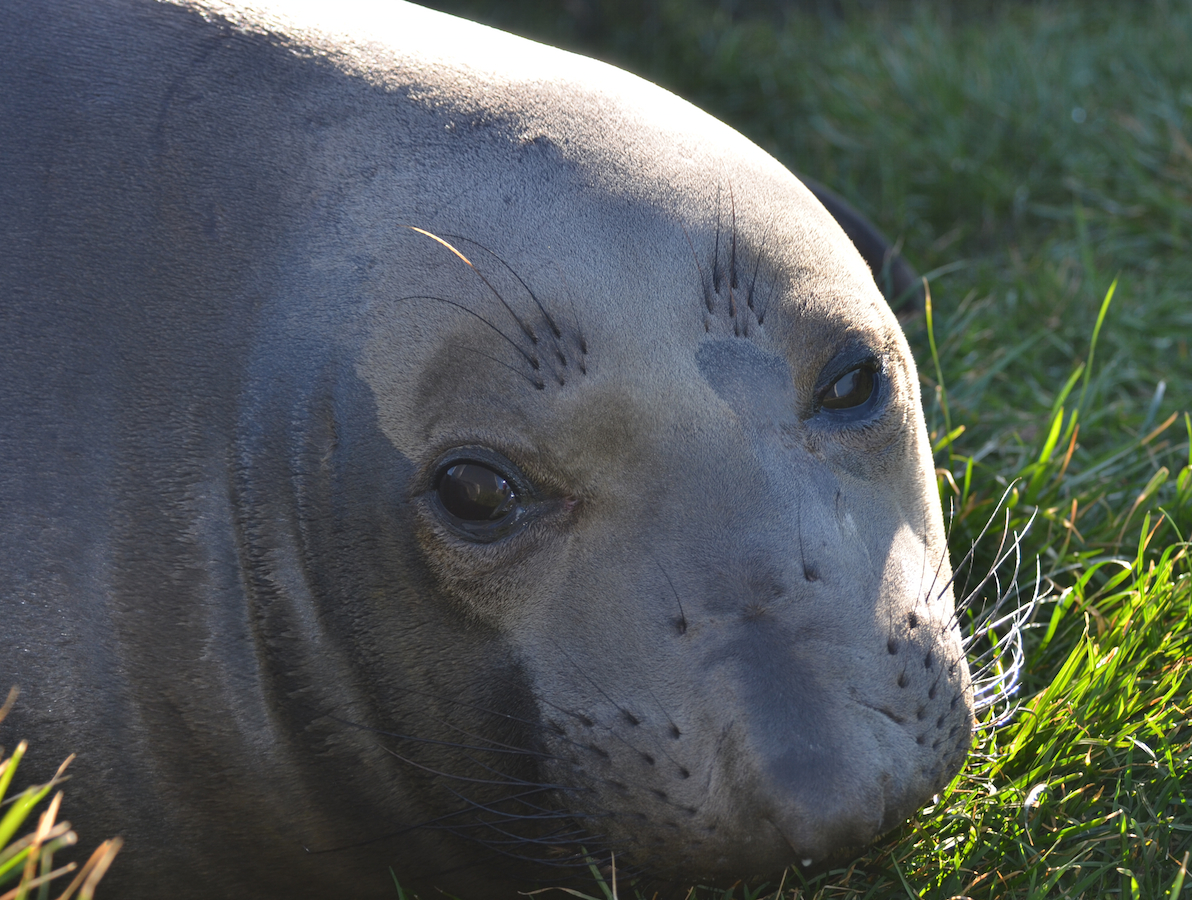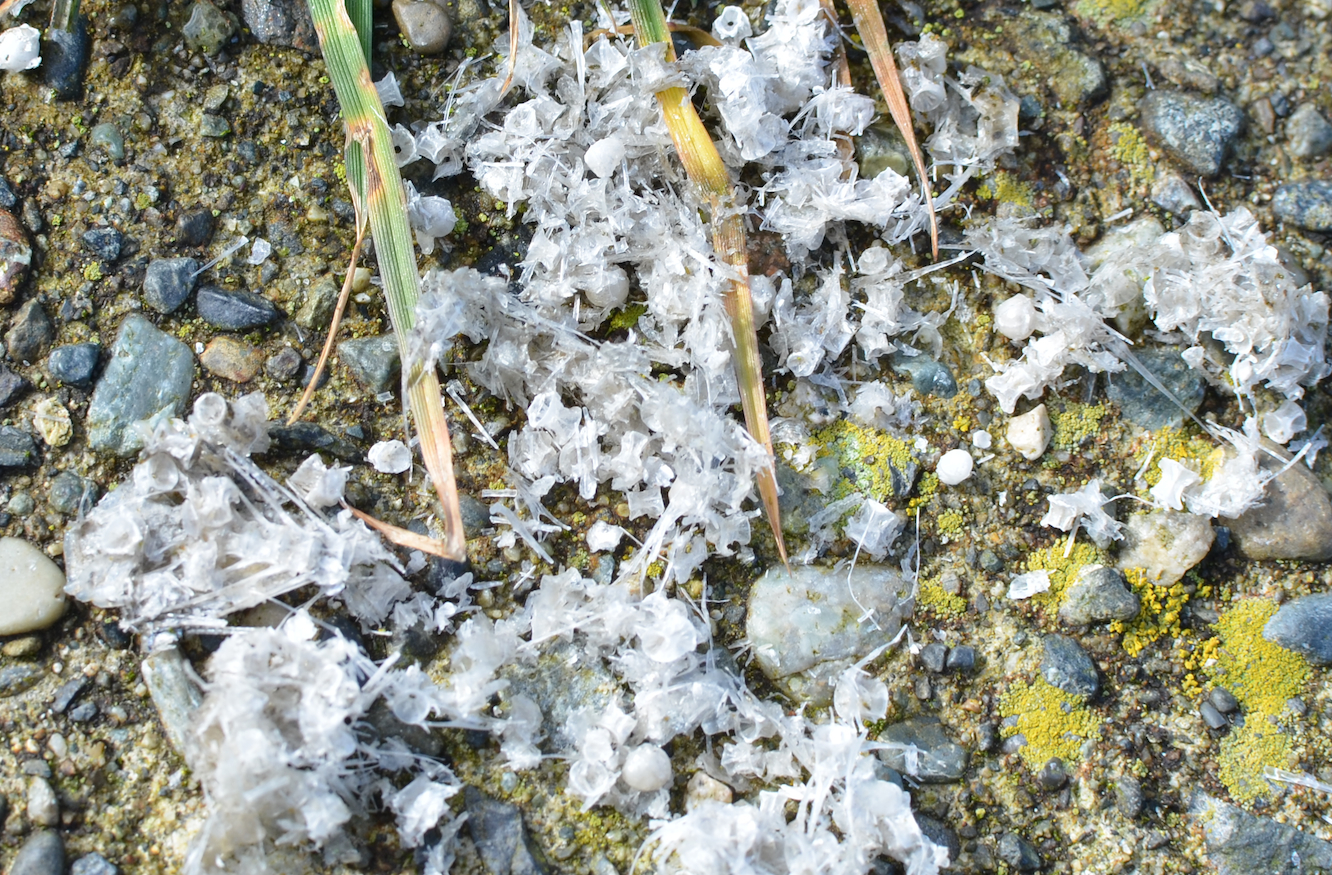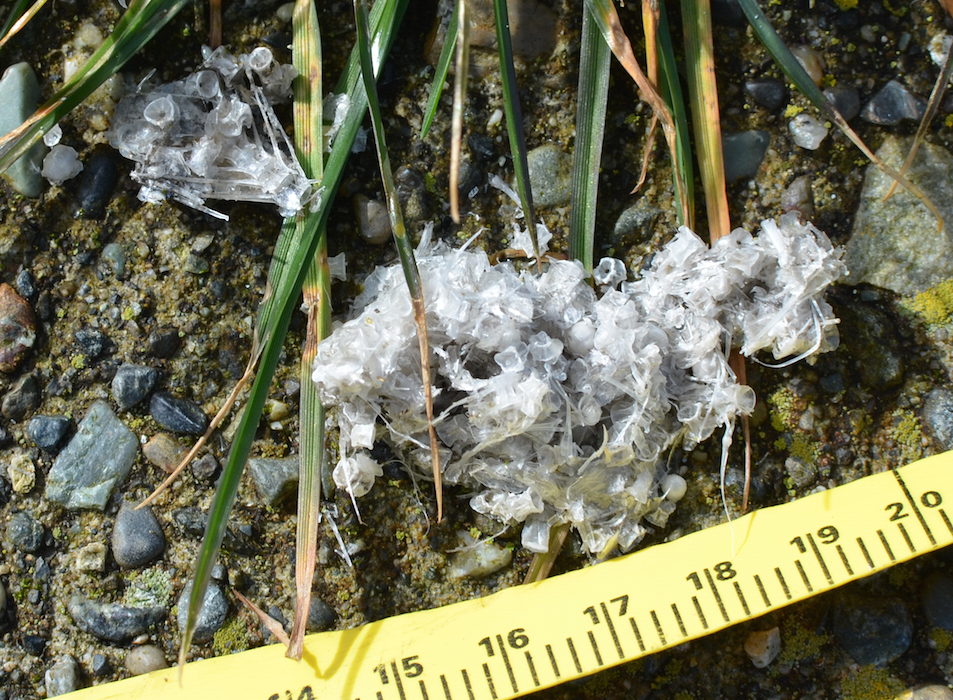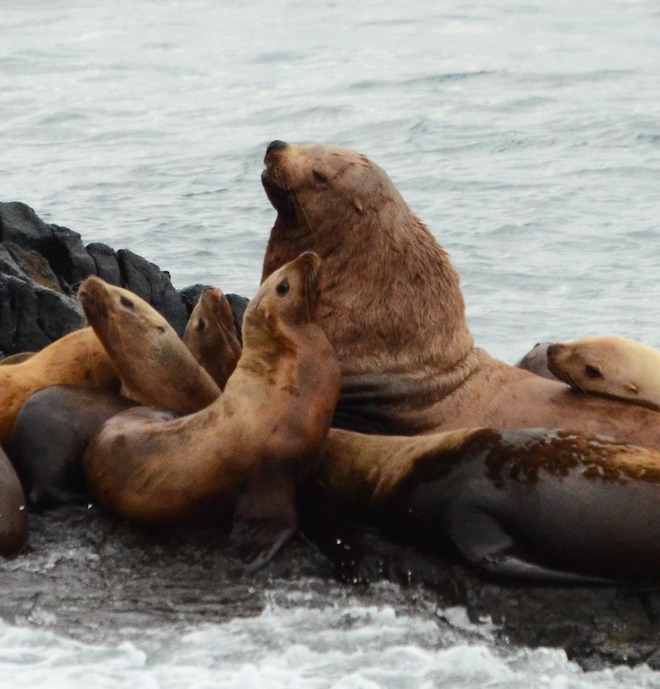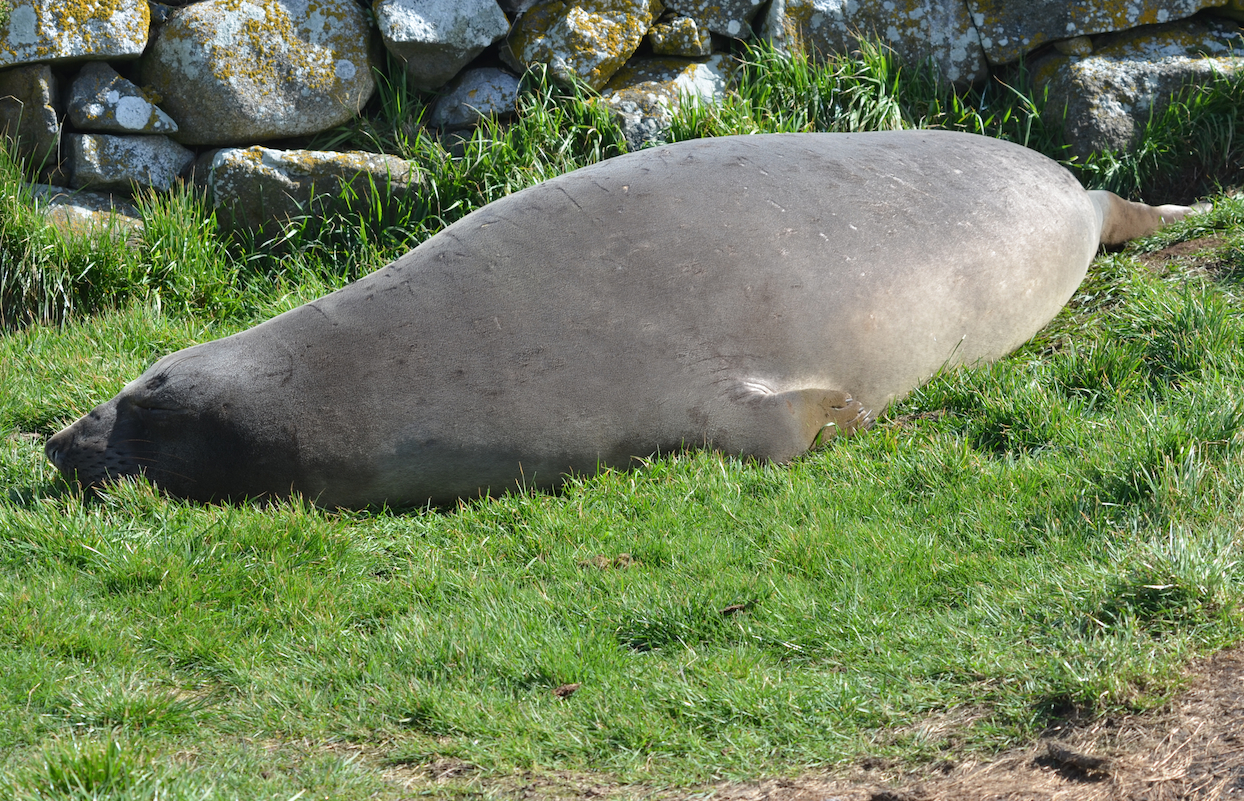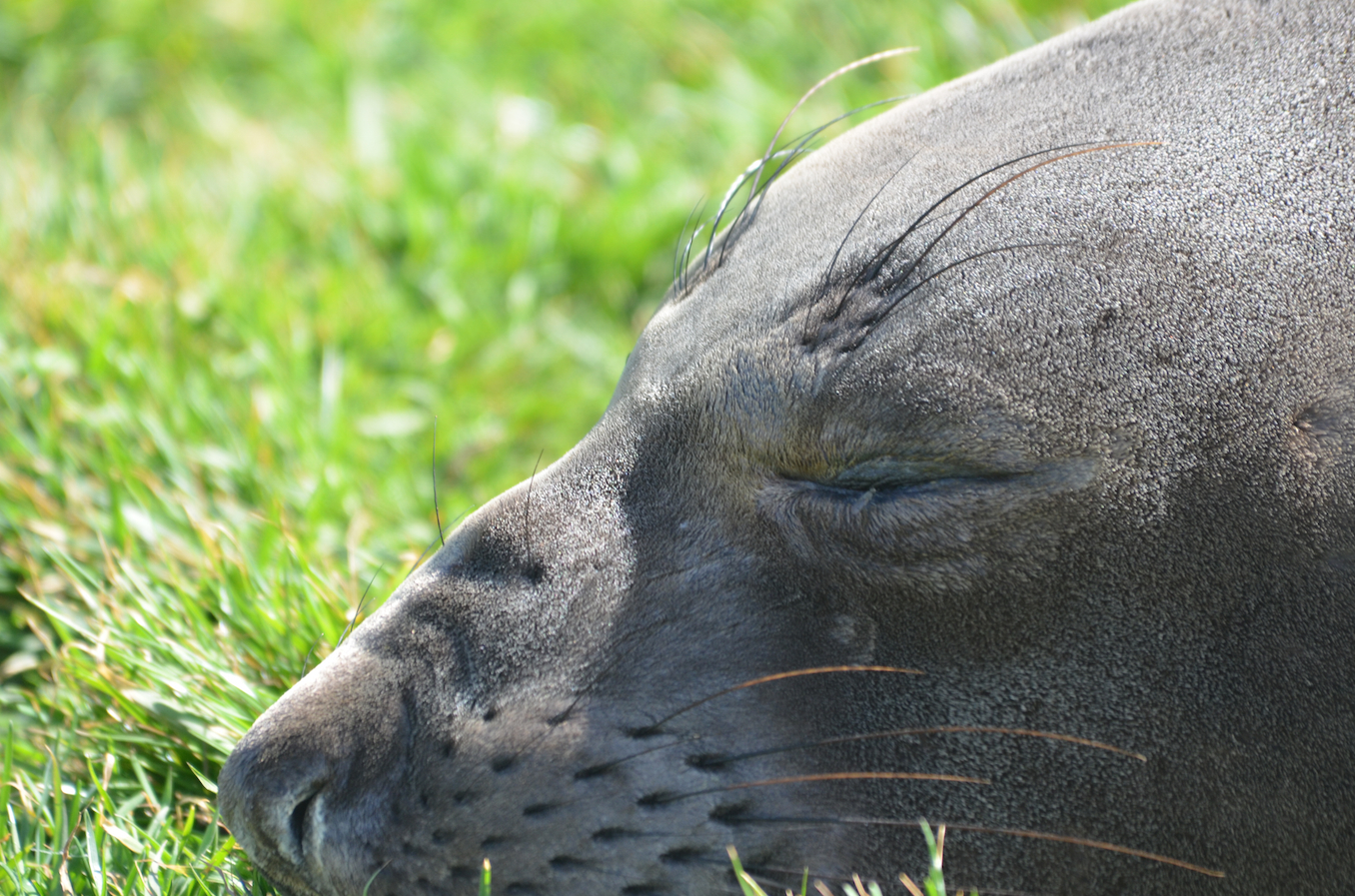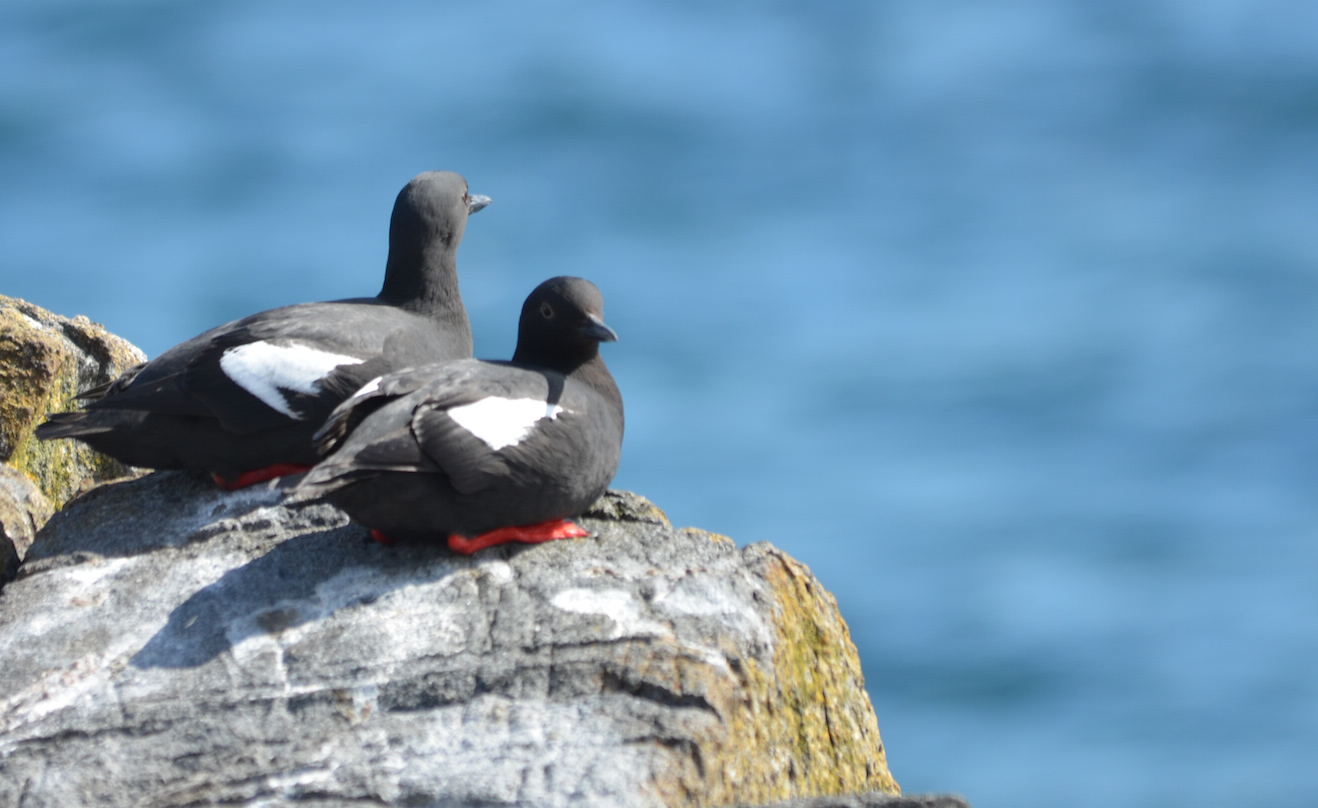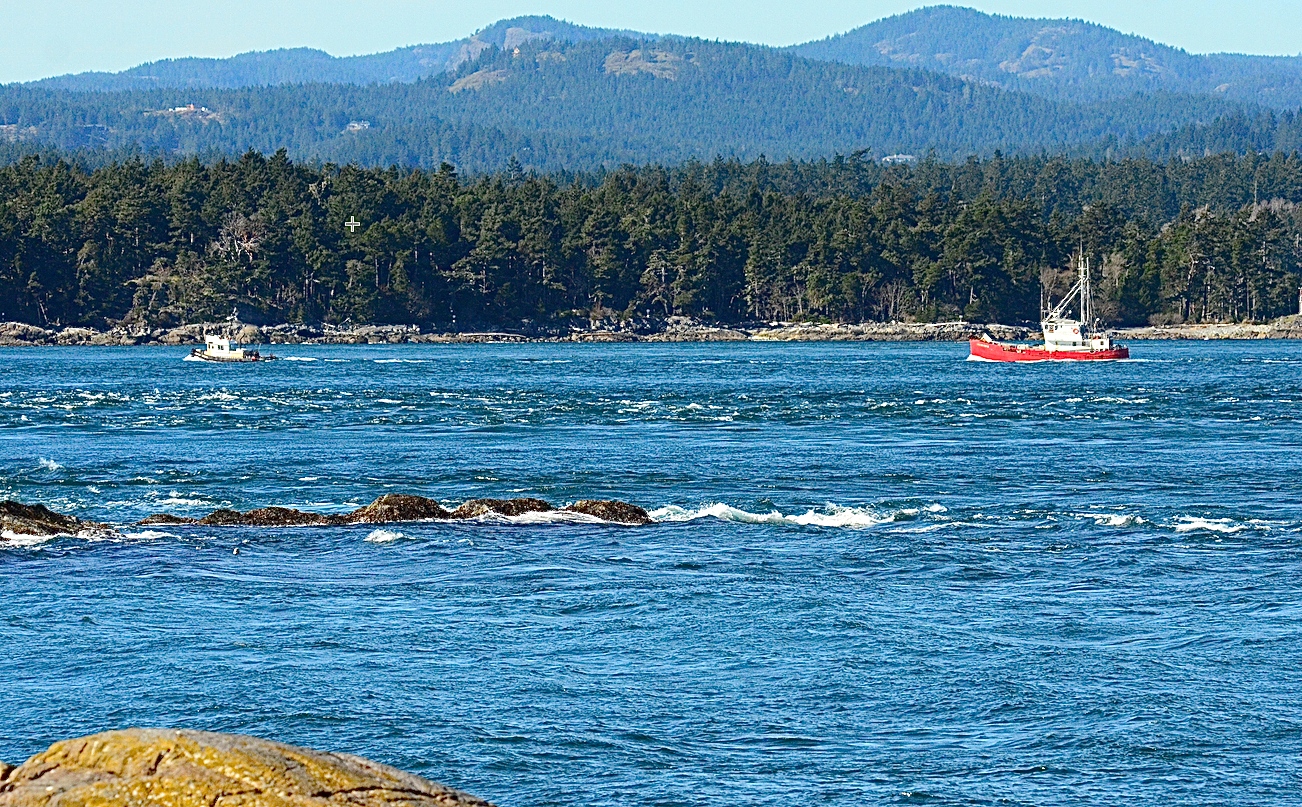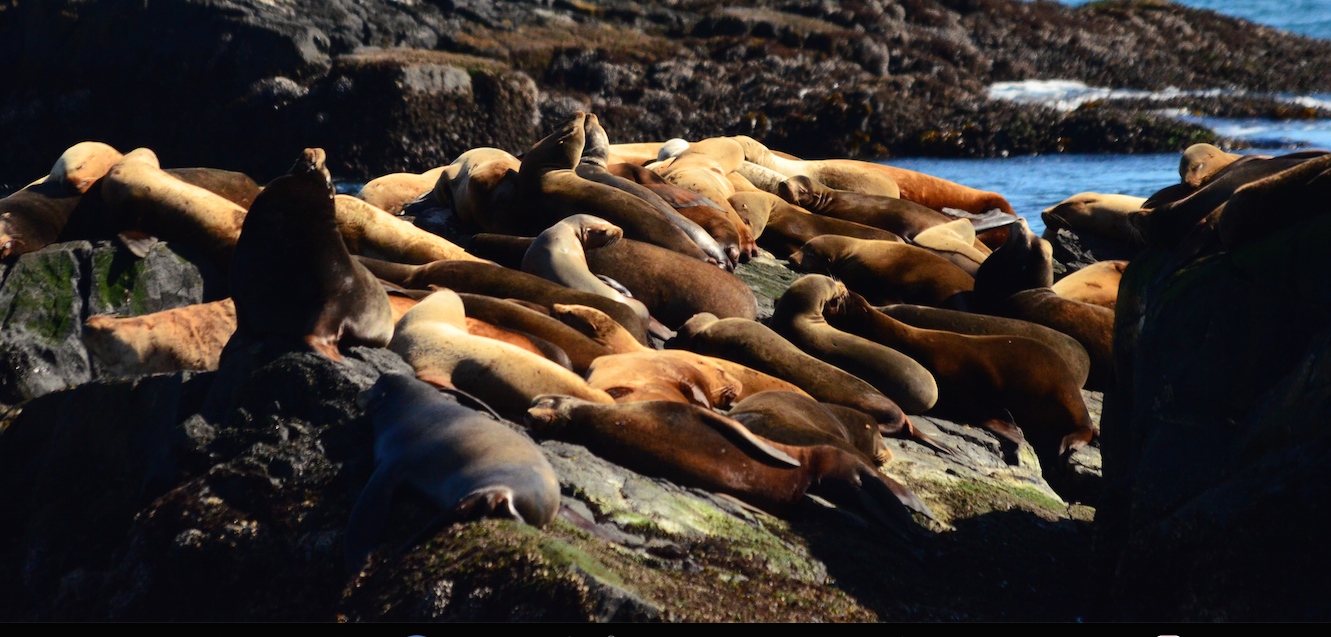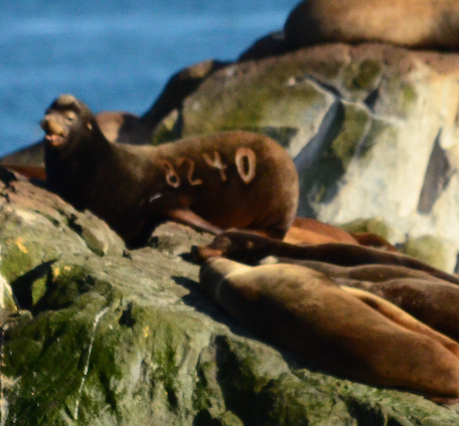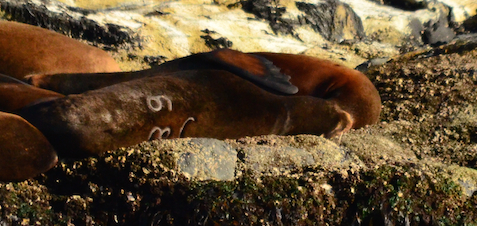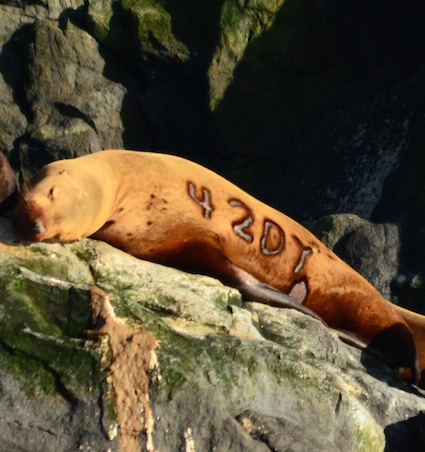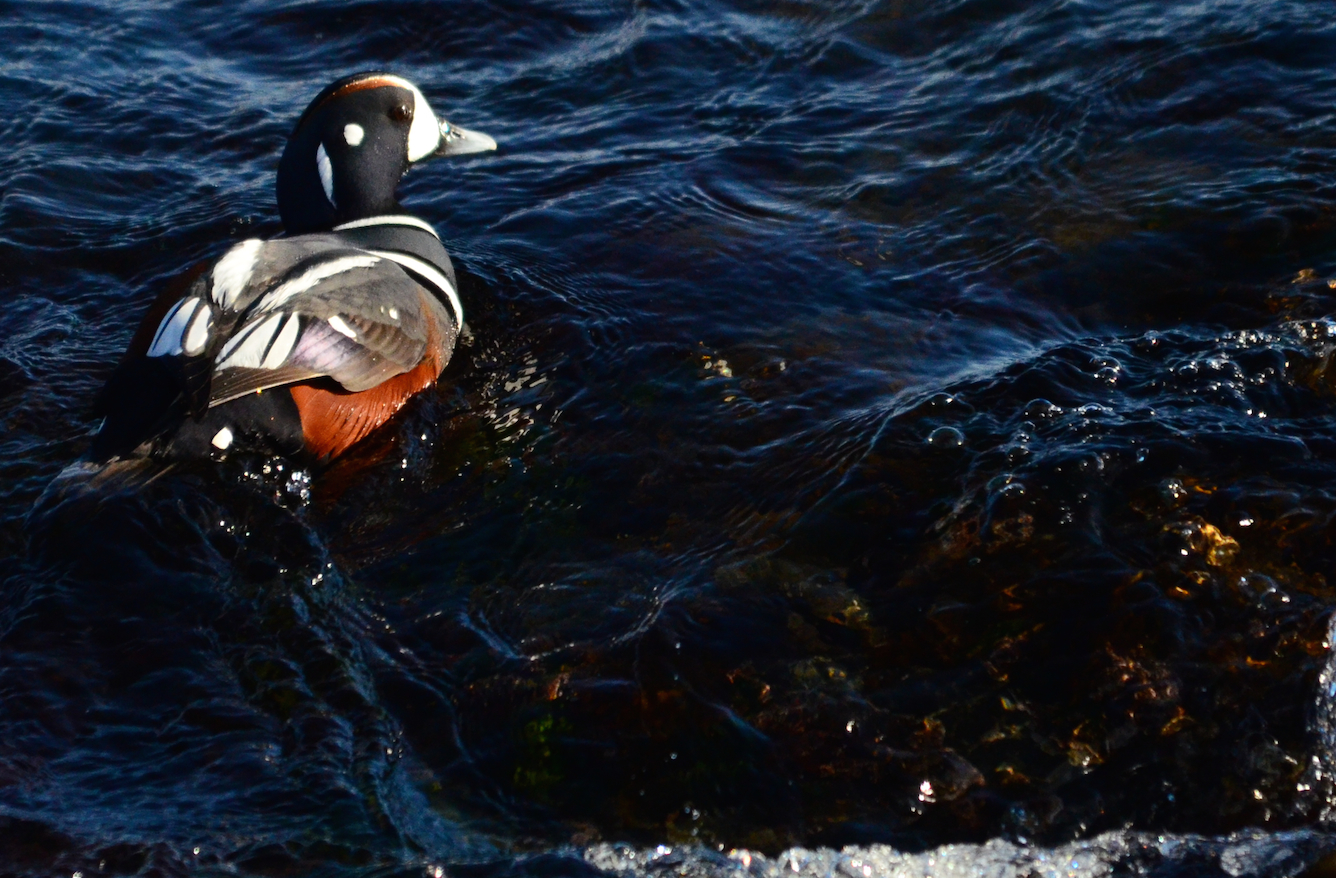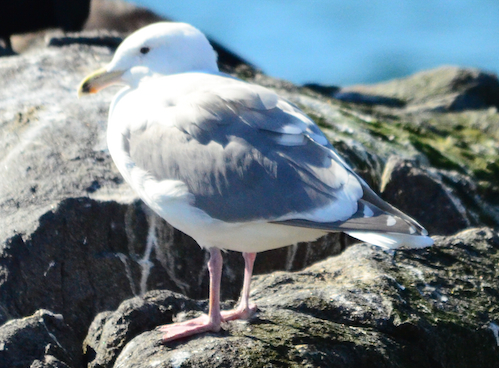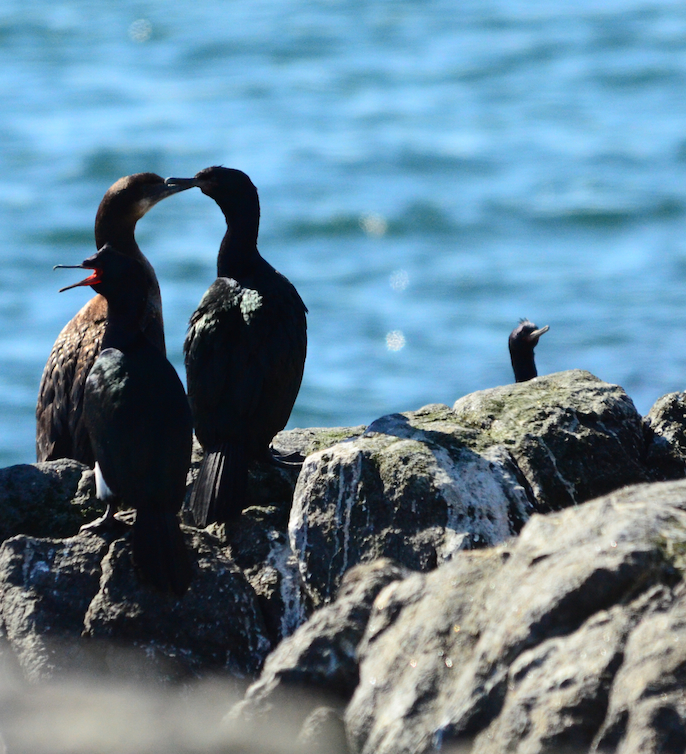Last night the westerly rose to 40 knots with stronger gusts, after dark. In the morning, it settled to a steady 25 to 30 knots and maintained that early evening when it rose again. The west wind and sunshine dominated the weather here today. The barometer stayed high between 1017 and 1019 hPa until early evening when it started to fall. There is a strong wind warning in effect and westerlies of 20 to 30 knots are expected to diminish to west 5 to 15 late overnight then become light near noon Sunday. The UV index climbed over 4 (moderate) today and should drop with cloud cover and showers predicted for tomorrow.
There were no whale watching or sports fishing vessels observed in the protected area today. The blustery winds and choppy, rough seas were a deterrent and there were whales elsewhere. A tug called Service X, about 35 – 40 feet long, was observed travelling west through Race Passage. It was plunging and taking waves over the wheelhouse as it made headway towards the west coast. One float plane flying fairly low at ~250 to 300′ passed over the island from west to east.
In the Ecological Reserve many of the animals were seeking shelter from the winds. A lone male, Sea Otter came close enough to be photographed and he appears to be in fine form. It may the same individual who was here for the last couple of years. He was seen once in the early morning about a week ago and then yesterday during the census, I spotted him drifting near the few, old Bull Kelp that survived the winter near Turbine Rock.
The eagles continue to chase the gulls and keep them flighty. I didn’t get a good count, but estimated early in the day that there were at least, twice the numbers of gulls counted in yesterday’s census. I will try to get a high count at some point during the week. Two of the juvenile eagles were also observed battling several times today, knocking each other out of the air and tussling on the ground. Chasing off geese is starting to be a losing effort. There are at least two nests now.
Chores were focussed on cleaning and the ever constant battle of the fly today. There were no visitors.
- This tug looks little but is probably 35 to 40 feet long.
- It is the Service X and seemed to be in a hurry as it plunged and rose through Race PAssage.
- This male Sea Otter managed to keep his forepaws, hind flippers and the top of his head dry, even when he was rolling around.
- This Sea Otter is about the size of a big dog like an Alsatian Shepherd. He is smart to stay in the lee of the island where it is calm.
- This individual seems quite undisturbed by human presence.
- When the Sea Otter rolled over onto his belly, it was easy to see that his big toe is in the same position our little toe is, on the outside. You can also see some of the thick undercoat as the pelage wrinkles on his back in this position.

